Different animated video styles for online ads
Building on the understanding that animation captures attention and connects with viewers, let us explore how to maximize impact through strategic execution. Going beyond the initial scroll stop requires focusing on elements that guide viewers toward desired actions and provide measurable results. Different styles of animated content offer unique ways to achieve these goals, but success hinges on smart implementation of key techniques.
Effectively leveraging an animated online video ad involves more than just creative visuals. They must be constructed with clear objectives guiding every element. Defining precisely what viewers should do next transforms passive watching into active engagement.
Employing clear and specific calls to action proves vital. Rather than vague prompts, action-oriented text like " Start Your Free Trial " or "Download the Report" directly instructs viewers and aligns with campaign objectives. Measuring the ROI of an Animated Online Video Ad goes beyond simple views, tracking costs against tangible value such as increased qualified leads or reduced support inquiries.
Integrating real-world scenarios within product tours makes them relatable, showing how offerings fit into existing workflows. Analyzing viewer behavior using tools like heatmaps reveals engagement patterns, highlighting confusing moments or drop-off points. Incorporating social proof, perhaps brief flashes of recognizable logos or user statistics, quickly builds credibility. Regularly conducting A/B testing on elements like thumbnails, introductory seconds, or CTA variations provides insights into audience preferences and improves conversion rates . Finally, optimizing for different platforms means considering viewer intent and environment, tailoring aspects like video length and the use of text overlays for sound-off viewing on social feeds.
Key animation techniques used in online ads
Crafting effective online animated ads involves mastering techniques that extend beyond initial creative concepts, ensuring the message resonates and drives action. A critical element is the call to action. Instead of vague prompts, employing specific, action-oriented text significantly impacts results. Consider phrases like "Start Your Free Trial" or "Download the Report," directly linking to the video's objective and the viewer's stage in their journey. Measuring success also requires looking past simple view counts. Tracking production costs against generated value, such as increased qualified leads or fewer support tickets due to clearer product understanding , provides a more accurate picture of Return on investment .
Showing products or services in real-world scenarios makes them instantly more relatable. Demonstrating features within relevant contexts highlights their practical value and believability. This could involve showcasing how a product integrates into existing workflows or directly solves problems specific to a user's daily tasks.
Analyzing viewer behavior offers powerful insights. Tools like heatmaps reveal exactly which parts of a product tour viewers watch, rewatch, or skip. This granular data identifies confusing segments or points where interest wanes, guiding optimization efforts. Incorporating social proof, such as brief glimpses of well-known company logos or statistics about satisfied users, quickly builds credibility and trust.
- A/B testing various ad elements refines effectiveness.
- Experimenting with thumbnails, intros, CTAs, or script variations yields significant insights.
- Platform optimization considers viewer intent and environment.
- Social media ads need instant grabs and sound-off understanding; product page videos can offer more detail.
For creators of an online animated ad, continuously refining these technical and strategic aspects ensures campaigns achieve their full potential. Demonstrating how a product fits user workflows is particularly effective in a 2D animated ad, where visual clarity helps simplify complex processes .
How animation builds brand identity in ads
Animation offers brands a dynamic means of expressing personality and values. Maintaining a consistent visual style, using elements like color palettes and typography, across animated advertisements builds immediate recognition. Storytelling within these visuals fosters emotional connections, effectively conveying brand essence, whether through a short clip or a detailed 2D animated explainer video .
Demonstrating products within real-world scenarios enhances their relatability and perceived value. Showcasing seamless integration into user workflows highlights practical benefits. Integrating social proof elements like client logos or user statistics quickly builds credibility and trust with potential customers.
Clear calls to action are vital for guiding viewers toward desired outcomes. Using action-oriented CTA text prompts specific next steps, moving beyond generic prompts. Tailoring CTA messaging to the viewer's journey increases its relevance and impact.
Analyzing viewer behavior data helps optimize content flow and identifies weak points where interest might drop.
A/B testing various ad creative, including CTAs, visuals, and narrative variations, refines performance and identifies what resonates most. A focused 2D animation video might be tested against other styles.
Optimizing animations for different platforms considers viewing habits, user intent, and technical environments.
Measuring return on investment involves comparing production costs to generated value like qualified leads, shorter sales cycles, or reduced support requests.
This strategic approach ensures animated advertisements solidify brand identity and drive measurable business results.
Animated storytelling for short online ads
Effective animated storytelling in short online ads culminates with a powerful call to action. Generic prompts lack impact; instead, specify the desired next step. Think action-oriented text like "Start Your Free Trial" or "Download the Report", aligning action text precisely with the video's goal and audience journey stage.
Measuring the value derived from these ads involves tracking initial production costs against tangible results . Success manifests as increased qualified leads, a shorter sales cycle from informed prospects, or even fewer support requests because features were clearly understood.
Engaging viewers means showing how a product or service fits their world. Utilizing real-world scenarios and demonstrating features within relevant contexts builds relatability. Showing integration into workflows boosts perceived value. For intricate products or services, sometimes clarity demands more detail than flat graphics allow. Crafting a 3D animated explainer video can illuminate internal workings or complex processes visually, simplifying understanding for viewers.
Beyond explainer formats, teams might choose diverse visual styles to capture attention. Whether employing clean motion graphics or a detailed 3D animation video , the chosen aesthetic must resonate with the brand and message.
- Utilize tools like heatmaps and attention tracking to understand viewer interaction, revealing watched, rewatched, or skipped segments and identifying points needing clarification.
- Build credibility swiftly by incorporating social proof, such as brief flashes of recognizable customer logos or statistics about satisfied users.
- Conduct A/B testing on various elements like thumbnail images, the critical opening seconds, CTA phrasing, or script variations to identify what drives conversions.
- Tailor content for platform specifics; social feeds demand brevity and sound-off comprehension while product pages accommodate more detail for higher intent viewers.
Optimizing performance across platforms ensures the animated story reaches the right audience with the right message, driving tangible results.
Reaching audiences with specific animation styles
Reaching audiences effectively demands more than just compelling visuals; it requires strategic execution throughout the viewer's journey. They must guide potential customers towards action through clear, unmistakable direction. Generic prompts often fall flat, whereas calls like "Start Your Free Trial" or "Request a Demo," tailored to the video's aim and audience progress, provide definitive next steps. This direct approach ensures viewers know precisely what is expected, transforming interest into tangible interaction.
Evaluating the success of these visual assets involves careful measurement. Beyond production expenses, marketers weigh value generated, such as acquiring more qualified leads or shortening sales cycles because prospects arrive better informed. Seeing reduced support inquiries from users who grasped product features through the video also demonstrates significant return. Quantifying these outcomes proves the investment's worth in driving business results.
Putting the product or service into relatable contexts makes a powerful connection. Showing how it solves real-world problems or integrates seamlessly into existing workflows heightens its perceived value. Analyzing viewer behavior offers crucial insights; heatmaps or attention-tracking tools reveal exactly which moments resonate or where interest wanes. This granular data helps pinpoint areas needing refinement to maintain audience attention.
- Incorporating social proof, like recognizable client logos or user statistics, builds immediate credibility and trust.
- A/B testing specific presentation elements, such as the thumbnail image or the critical first ten seconds, can significantly boost engagement metrics.
- Testing variations in CTA placement or wording drives higher conversion rates.
- Optimizing content for different platforms means considering viewing environments and intent; an animated ad video for a social feed needs quick impact, possibly without sound, while one on a product page can offer more detail.
Weaving in elements of an animated brand story can further deepen the audience connection, humanizing the company behind the offering and fostering loyalty that extends beyond a single interaction.
Animated video formats for different ad platforms
Navigating online spaces means adapting animated video approaches. Platforms like social media feeds demand instant attention from viewers. Often, audiences consume these videos without sound, making text overlays essential for conveying messages clearly. Keeping these shorter works best for visibility and viewer patience in fast-scrolling environments. In contrast, videos residing on owned sites, such as product or landing pages, often engage visitors with higher intent. These videos can explore topics in greater detail and potentially run a bit longer. For quick attention in busy feeds, creators often craft an animated commercial video designed to make an immediate impact, even without sound. On product pages or landing sites, a detailed animated demo video helps potential customers understand how a solution works by showing features in action.
Implementing clear calls to action proves vital for prompting desired actions. Instead of vague prompts, they employ action-oriented phrases specific to the video's purpose and the viewer's stage. Measuring success moves beyond simple cost tracking; it involves quantifying value generated. This includes capturing metrics like increased qualified leads, reductions in sales cycle duration from better-informed prospects, or fewer support inquiries as users grasp features shown in video.
Product demonstrations become more persuasive by showing real-world scenarios and how they integrate into user workflows. This contextual approach elevates the perceived value. Analyzing viewer behavior within the video itself reveals exactly which sections capture attention, are rewatched, or get skipped, providing valuable data for refinement. Including social proof elements, such as mentioning satisfied user numbers or flashing client logos, quickly builds credibility and trust.
Experimenting with various video components through A/B testing, such as thumbnails, opening seconds, CTA wording, or even script variations, yields significant insights into what resonates most with the target audience and drives improved conversions.
Animation emphasizing your online ad message
Making animated ads truly effective goes beyond initial visual appeal or basic reach; the core message and its delivery are paramount for driving desired actions. Once viewers are initially captured, perhaps by compelling visuals, the focus shifts to clearly communicating value and guiding them towards conversion. It becomes essential to structure the animation to resonate deeply and motivate the audience effectively.
Presenting how a product or service fits into a user's world makes it relatable. Crafting an animated explainer video allows brands to break down complex processes visually, demonstrating features within realistic scenarios and showing seamless integration into existing workflows. This approach increases the perceived value by illustrating tangible benefits and problem-solving capabilities, making the offering feel indispensable.
- Craft calls to action that are precise and action-oriented, moving beyond generic prompts to specific requests like "Start Your Free Trial" or "Download the Report" tailored to the viewer's likely stage.
- Strengthen trustworthiness by incorporating social proof elements; featuring familiar client logos or positive user metrics can quickly build credibility with potential customers.
- Employ analytics tools to scrutinize viewer behavior patterns, utilizing heatmaps and attention tracking to identify which segments hold interest and which might cause drop-offs.
- Conduct A/B testing on critical ad components, experimenting with elements from the initial seconds and content variations to the wording or placement of the call to action to refine performance.
Understanding the impact of an animated infographic ad or any animated format involves more than surface metrics; it means measuring the genuine value generated. This includes tracking increased qualified leads, noting reductions in the sales cycle length as prospects are better informed, and quantifying savings from fewer user support inquiries due to clearer explanations provided by the video.
Technical considerations for online animated ads
Optimizing online animated ad performance demands careful technical considerations extending far beyond the creative process itself. Ensuring maximum viewer impact requires deliberately guiding audience actions and gaining deep understanding into their interaction patterns. Teams focusing on these technical levers find their campaigns resonate more powerfully and drive tangible results. Analyzing the performance data generated by each animated marketing video offers crucial insights into its effectiveness across different channels and audiences.
Measuring campaign success evolves beyond simple view counts toward quantifiable business outcomes. Calculating the return on investment by tracking costs versus value provides essential financial clarity guiding future spending. Monitoring impact on qualified lead generation gives direct insight into marketing pipeline contribution. Evaluating changes in sales cycle duration shows efficiency gains possible through better informed prospects. Measuring reduction in support inquiries highlights clearer product understanding among users who engaged with the content.
Understanding precisely how viewers interact allows for continuous refinement and improvement. Utilizing viewer heatmaps tracking engagement reveals exact viewing patterns within the video content. Pinpointing low retention video sections revision becomes possible with this data identifying where interest wanes or confusion arises. Presenting real world scenarios illustrating seamless product workflow integration resonates deeply with potential users. Showcasing solutions audience specific challenges increases relevance connecting product benefits daily tasks directly.
- Craft specific, action-oriented calls to action, such as "Start Your Free Trial" or "Request a Demo," aligning prompt text precisely with viewer's stage in their journey to maximize conversion opportunities.
- Implement robust ROI measurement systems tracking the total cost against generated value like increased qualified leads, shorter sales cycles, or decreased support volume.
- Utilize viewer analytics tools like heatmaps and attention tracking to pinpoint engaging and confusing video segments, guiding targeted content revisions for better audience retention.
- Adapt ad strategy for different platforms and viewing contexts; for platforms featuring formats like the animated pre-roll ad, prioritize design understandable without sound, while longer videos on product pages leverage higher viewer intent.
Mastering these technical aspects unlocks significant potential ensuring animated campaigns not only look great but also perform effectively driving measurable business growth.
Role of animated characters in online ads
Animated characters possess a unique ability to capture attention instantly, breaking through the digital noise feeds present. They forge immediate connections, drawing viewers into the narrative and making the message feel more approachable and less like traditional advertising. Through dynamic visuals and expressive actions, these characters become the central figures delivering the brand's story, making complex ideas digestible and memorable for diverse audiences.
The journey characters take within an ad can vividly demonstrate product benefits or navigate real-world scenarios, showing solutions in action. For a complex product, particularly an animated saas explainer , clearly showing feature interactions through character actions simplifies understanding significantly. Guiding viewers toward a clear call to action is the essential final step, transforming engagement into tangible results. Action-oriented text prompts specific desired responses effectively.
Measuring the true impact for an animated sales video goes beyond views, focusing on conversion metrics and return on investment. Tracking costs against value generated, like increased leads or reduced support queries, provides clear evidence of effectiveness. Understanding precisely how viewers interact involves analyzing behavior data, including identifying moments where attention peaks or drops. A/B testing various character presentations or calls to action refines performance. Incorporating social proof where characters interact with elements representing satisfied customers or endorsements builds essential credibility quickly. Optimizing content for different platforms ensures characters perform effectively whether sound is off or attention spans are short.
- Analyzing viewer behavior with heatmaps reveals specific points characters hold attention or where adjustments are needed.
- Using Character interactions to demonstrate product use in relatable contexts boosts perceived value for potential customers.
- Employing specific, action-oriented language in calls to action guides viewers effectively towards desired next steps.
- Strategic A/B testing of character elements and calls to action refines creative for improved conversion rates.
Ultimately, well-designed and purposefully animated characters are powerful assets, enhancing understanding, building trust, and driving measurable results in online video advertising.
Visualizing complex ideas using animation
When visualizing complex ideas using animation, the goal extends beyond mere explanation; it involves guiding the viewer toward a desired action. Effective animated online video ads ensure the audience knows precisely what step to take next. This means moving past vague prompts and embracing clear, action-oriented text in calls to action. Instead of generic directions, consider specific invitations that align with the video's purpose and the viewer's potential interest level. Tailoring the ask maximizes engagement potential.
Measuring the true impact of an animated online video ad requires looking beyond simple view counts. It necessitates tracking the costs involved in production against the tangible value generated. This value manifests in various ways, such as an increase in qualified leads, a noticeable reduction in the sales cycle length because prospects arrive better informed, or even a decrease in support tickets from users who gained clarity from watching, perhaps from an animated service explainer detailing features. Understanding this return on investment is critical.
To make complex offerings relatable, especially when demonstrating functionality , presenting features within real-world scenarios resonates powerfully. Showing how a product integrates seamlessly into existing workflows or solves problems directly relevant to a user's daily tasks significantly increases its perceived usefulness. For instance, an animated software demo becomes far more compelling when it illustrates the tool being used to overcome a common challenge specific to the target audience's industry, potentially incorporating social proof like logos of satisfied users for added credibility.
- Analyzing viewer behavior through heatmaps or attention-tracking tools reveals exactly which parts of a video hold interest or cause viewers to drop off, pinpointing areas needing refinement.
- Conducting A/B testing different elements—from the initial thumbnail and the opening seconds to the call-to-action wording or placement—yields invaluable data on what truly connects with the target audience and drives conversions.
- When seeking to optimize for different platforms, consider the viewer's mindset and environment; a video designed for a social feed needs immediate impact and perhaps text overlays for sound-off viewing, unlike one on a product page where viewers arrive with higher intent.
- Incorporating brief, impactful social proof, such as statistics about successful outcomes or flashes of recognizable company logos using the product, quickly builds trust and reinforces the message's validity.
Ultimately, creating impactful animated visuals for complex subjects involves a strategic blend of clear communication design, diligent performance measurement, and continuous refinement based on how viewers interact with the content.





































